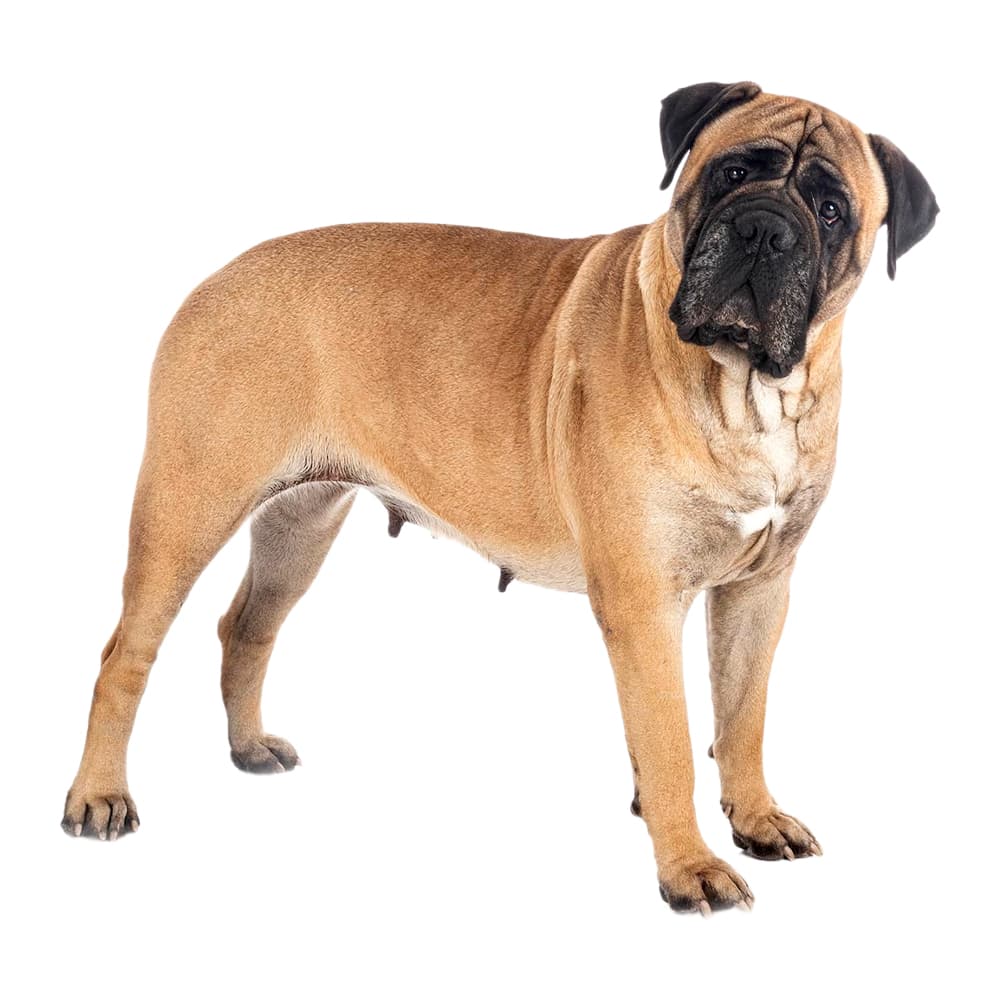Discover your dog's connection to this breed and 200+ others


Discover your dog's connection to this breed and 200+ others



The Mastiff is sometimes referred to as the Old English Mastiff to avoid confusion with other types of Mastiffs like the Tibetan Mastiff or Neapolitan Mastiff. The Mastiff is a large, powerful breed with an ancient lineage. The earliest record of Mastiffs can be traced back to 3000 BC, in Egyptian art. Mastiffs were also referenced in ancient Roman and Greek literature. They were originally used as war dogs and protectors. In Medieval England, Mastiffs were used for hunting large game and protecting estates. The modern breed we know today was developed in England and later introduced to other parts of the world through colonization and trade. Julius Caesar noted large dogs that helped to defend Britain during his invasion in 55 B.C. Some of these large Mastiffs were brought back to Rome to fight human gladiators and wild beasts in the arena. In medieval England, Mastiffs were used as big-game hunters, guardians of estates at night, and war dogs. At the end of World War II, it is estimated only 14 Mastiffs were still in existence in all of Britain. Breeders in the United States helped to revive the breed.
The Mastiff can suffer from eye disorders, cardiomyopathy and other heart conditions, hip dysplasia, osteosarcoma, von Willebrand disease, epilepsy, and degenerative myelopathy. This breed may develop hygromas, which are harmless cushions that can naturally develop to protect their elbow joints (can be drained by a vet if needed). As a large breed, they are susceptible to bloat, also known as gastric dilation volvulus (GDV). This is a life-threatening condition that can come on suddenly, so it’s important to know the warning signs and get an affected dog immediate veterinary care. Some Mastiffs may be affected by cruciate ligament rupture, and vaginal hyperplasia. They can also be prone to obesity. Other specific conditions for which they can be genetically tested include cystinuria (type 3), multifocal retinopathy 1, progressive retinal atrophy, and hyperuricosuria. Genetic testing can assist veterinarians with diagnosis and proactive care, as well as help breeders identify affected and carrier dogs.
Mastiffs are known for their gentle, dignified, and loyal nature. They are extremely protective of their families and can be wary of strangers. Despite their size, Mastiffs are generally good with children and other pets, showing patience and restraint. They are intelligent, but can be stubborn, so consistent and positive training methods work best. Mastiffs need moderate exercise to prevent obesity and maintain their health.
A canine genetic lineage is a group of individuals or entire breeds that descended from common ancestors predating modern breed formation. Often these lineages are associated with a ‘type’ of dog with a unique historical working role and associated behaviors (e.g., herding, scent hunting, etc.).
Mastiff and bull-type breeds have strong, muscular builds. Both mastiff and bull-type breeds are protective and loyal, which are essential traits for this breed as guardian dogs and as companions. Although they appear imposing, many of these breeds are known for their gentleness and affection towards their families. They are a great example of loyal guardian dogs.
Example breeds with ancestry from this lineage include French Bulldog, St. Bernard, and Bullmastiff.
Mastiffs are among the heaviest breeds, with adult males weighing up to 230 pounds or more.
The largest Mastiff ever recorded, named Zorba, weighed 343 pounds and measured over 8 feet from nose to tail.
Mastiffs have appeared in literature and film, including in "Sherlock Holmes" and "Harry Potter".
https://www.akc.org/dog-breeds/mastiff/ https://www.ukcdogs.com/Mastiff https://www.fci.be/en/nomenclature/MASTIFF-264.html
https://www.petmd.com/dog/breeds/c_dg_mastiff
https://www.pawprintgenetics.com/products/breeds/108/
Recommended by top vets with decades of experience
21 breeds
64 genetic health markers
50 genetic trait markers
